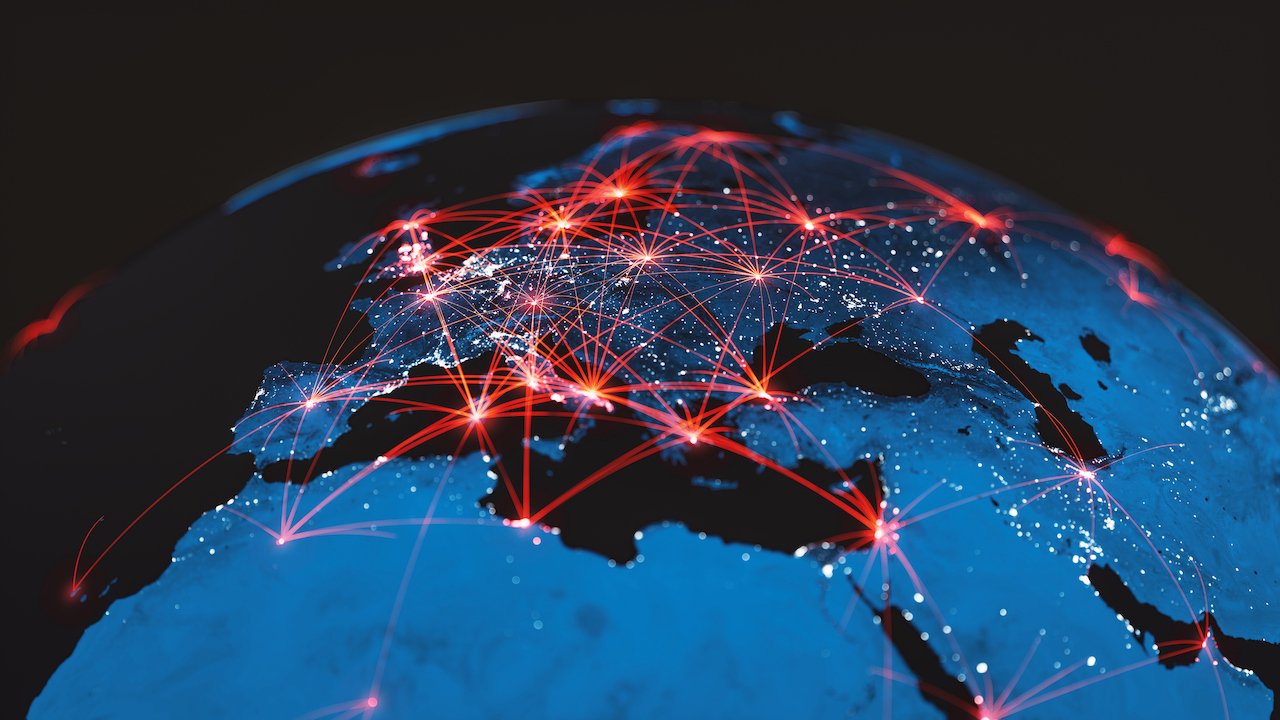Revolutionizing Communication: The Ultimate History of the Internet
The internet stands as one of the most transformative inventions in human history. It has reshaped how we communicate, work, learn, and entertain ourselves. From its beginnings as a military research project to the global network that powers nearly every facet of modern life, the Internet’s evolution is a story of innovation, collaboration, and a constant drive for connectivity. This blog traces the journey of the internet, starting with ARPANET and leading into the modern age of the Internet of Things (IoT).
Introduction
The internet has become indispensable in our daily lives. It enables rapid communication, information sharing, and collaboration on a global scale. But how did this immense network come to be? The journey of the internet’s development spans decades, filled with key moments of innovation that have brought us to the hyper-connected world we live in today. In this post, we’ll explore the milestones in internet history, from the earliest forms of digital communication to the cutting-edge technologies shaping its future.
Pre-Internet Era: Foundations of Communication
Before the Internet existed, people were already laying the groundwork for long-distance communication. Samuel Morse’s invention of the telegraph in 1837 revolutionized communication by transmitting electrical signals over wires. Alexander Graham Bell’s telephone in 1876 further advanced this concept, allowing for real-time voice communication. These early innovations set the stage for the interconnected world that the internet would eventually create.
The Birth of ARPANET
The Internet’s origins can be traced back to 1969, with the creation of ARPANET (Advanced Research Projects Agency Network). During the Cold War, the U.S. Department of Defense wanted a decentralized communication system that could withstand military threats. This led to ARPANET, the first-ever network to use packet switching.
The first message sent over ARPANET was simple: “LO.” It was intended to be “LOGIN,” but a system crash cut the message short. Despite the glitch, this marked the beginning of a new era in communication.
Packet Switching: The Key to Efficient Data Transmission
Packet switching, developed by Paul Baran and Donald Davies, changed how data moved across networks. Before this innovation, circuit switching was the norm, requiring a dedicated line for the entire duration of communication. Packet switching broke data into smaller packets that traveled independently across the network, optimizing bandwidth use and improving reliability.
The Growth and Expansion of ARPANET
By the 1970s, ARPANET began connecting more institutions and universities across the U.S., eventually growing to include over 200 nodes by the early 1980s. One of ARPANET’s most important applications was email, invented by Ray Tomlinson in 1971. The introduction of the File Transfer Protocol (FTP) during this period further enhanced ARPANET’s capabilities by allowing file sharing between computers.
The Invention of TCP/IP Protocol
The development of the Transmission Control Protocol (TCP) and Internet Protocol (IP) by Vinton Cerf and Robert Kahn in 1974 was a turning point for the internet. These protocols allowed different networks to communicate, enabling the creation of a global network. In 1983, ARPANET adopted TCP/IP, establishing it as the universal communication standard and paving the way for the internet’s rapid expansion.
The Rise of Email and Digital Communication
Email, one of the first widely adopted digital communication tools, played a major role in popularizing the internet. By the late 1970s, email accounted for over 75% of ARPANET traffic. The introduction of Simple Mail Transfer Protocol (SMTP) in 1982 made email even more reliable and easy to use.
NSFNET: Building the Internet’s Infrastructure
In 1985, the National Science Foundation (NSF) launched NSFNET to support academic research. This network became the backbone of the modern internet. By the time ARPANET was decommissioned in 1990, NSFNET had become the primary infrastructure, supporting thousands of networks and opening the internet to the public.
The Birth of the World Wide Web
Tim Berners-Lee’s creation of the World Wide Web in 1989 revolutionized how information was accessed. While the internet provided the underlying network, the web allowed people to easily navigate it through hypertext links. Berners-Lee also developed HyperText Markup Language (HTML) and the first web browser, making the internet more accessible to the public. The first website, created in 1991, laid the groundwork for the vast web we know today.
The Dot-Com Boom and Its Aftermath
The 1990s were defined by the commercialization of the internet. Businesses recognized the potential for e-commerce, and companies like Amazon and Yahoo! emerged during this time. However, speculative investments led to the Dot-Com Boom, followed by a major crash in 2000. Despite this bust, many companies like Google survived and thrived, establishing themselves as dominant forces in the digital economy.
Social Media and the Web 2.0 Era
The early 2000s marked the rise of Web 2.0, a more interactive and social version of the internet. Platforms like MySpace, Facebook, and YouTube allowed users to create content and engage with others in real-time. This shift not only transformed communication but also paved the way for social media marketing and influencer culture.
Mobile Internet and the Smartphone Revolution
In 2007, Apple introduced the iPhone, sparking the mobile internet revolution. For the first time, users could access the internet anywhere with a handheld device. Mobile apps made online services even more accessible. By 2016, mobile internet usage had surpassed desktop use, cementing smartphones’ role in the future of internet technology.
Broadband and High-Speed Internet: Changing the Game
Broadband replaced slower dial-up connections in the early 2000s, offering faster browsing, streaming, and gaming. The widespread adoption of high-speed internet laid the foundation for the rise of streaming platforms like Netflix and YouTube, which require robust internet infrastructure to deliver high-quality content.
Cloud Computing: A New Era of Data Storage
Cloud computing revolutionized data storage by allowing businesses and individuals to store and access information remotely. This technology, offered by services like Amazon Web Services (AWS) and Google Cloud, reduced the need for physical storage and opened up new possibilities for big data, machine learning, and collaboration.
The Internet of Things (IoT): Connecting the World
The Internet of Things (IoT) connects everyday devices to the internet, from smart home appliances to industrial machinery. IoT allows for data sharing and automation, leading to smarter cities, more efficient industrial processes, and innovations in healthcare.
Cybersecurity and Privacy Challenges
As the internet grows, so do concerns over cybersecurity. The rise in cyberattacks, data breaches, and identity theft has made security a top priority for governments and businesses. From encryption to secure authentication methods, efforts are ongoing to protect users from online threats.
The Dark Web and the Rise of Cyber-crime
The dark web, accessible only through specialized software like Tor, has become a hub for illicit activities, from drug trafficking to hacking. While it also provides a platform for free speech in oppressive regimes, its association with cyber-crime makes it a target for law enforcement.
Government Regulation and Internet Freedom
Government involvement in regulating the internet varies worldwide. While some countries strive to protect net neutrality and maintain a free and open web, others impose strict censorship. Debates about internet freedom and regulation continue as more aspects of daily life move online.
The Digital Divide and Efforts to Bridge It
The digital divide refers to the gap between those with internet access and those without. This disparity is especially evident in developing regions. Bridging this divide is crucial for ensuring global equality and enabling everyone to benefit from the Internet’s vast resources.
The Future of the Internet
The future holds many exciting possibilities. The rollout of 5G networks will provide faster speeds and enable technologies like augmented reality (AR) and virtual reality (VR). Advancements in artificial intelligence (AI) will continue to influence the development of smart devices and online services, shaping the next generation of the internet.
Conclusion
From its early beginnings as ARPANET to the rise of the Internet of Things, the Internet’s journey is a testament to human innovation. It has revolutionized communication, commerce, and entertainment, shaping modern life in ways previously unimaginable. As we look toward the future, the internet will undoubtedly continue to evolve, offering new opportunities and challenges in our increasingly interconnected world.
Frequently Asked Questions (FAQs)
What was the first message sent over ARPANET?
The first message was “LO,” intended to be “LOGIN,” but a system crash shortened it.
What’s the difference between the internet and the World Wide Web?
The internet is a global network of computers, while the World Wide Web is a collection of linked documents accessible via the internet.
How did email contribute to the Internet’s growth?
Email quickly became one of the most popular applications on the internet, driving early adoption by allowing fast, cost-effective communication.
What caused the Dot-Com Bust?
The Dot-Com Bust was caused by the overvaluation of internet companies during the late 1990s, leading to a market crash.
What role does cloud computing play today?
Cloud computing allows remote data storage and processing, driving innovation in industries ranging from healthcare to entertainment.
Why is bridging the digital divide important?
Bridging the digital divide ensures global access to the internet, promoting equity and providing opportunities for education and economic growth.










